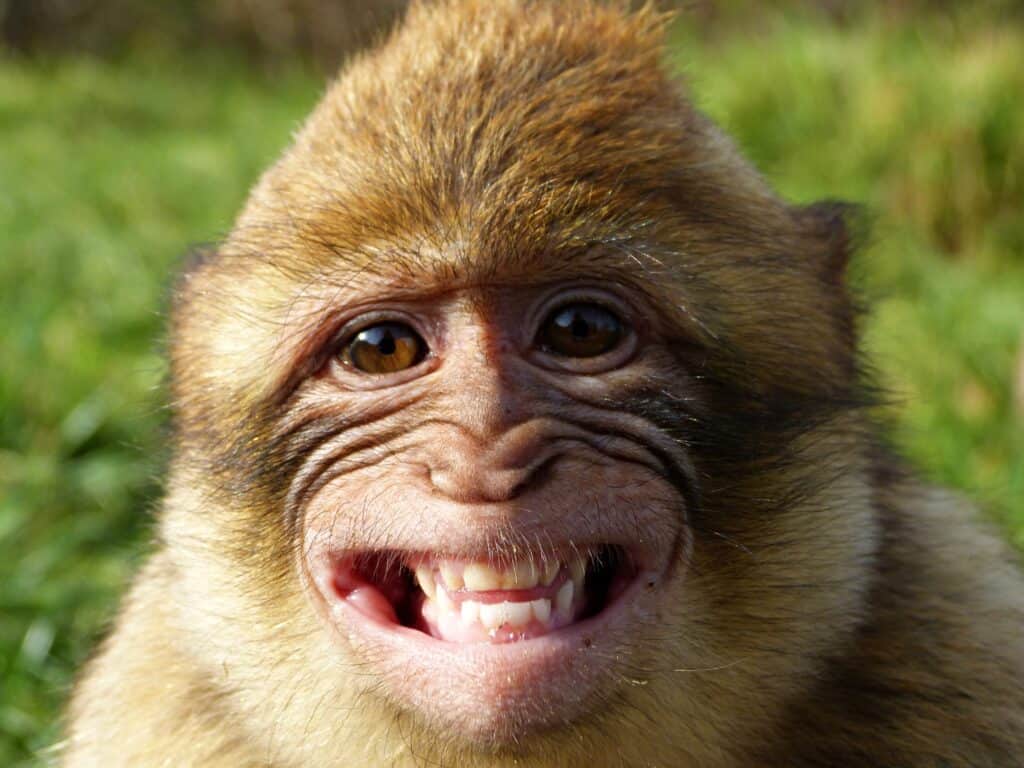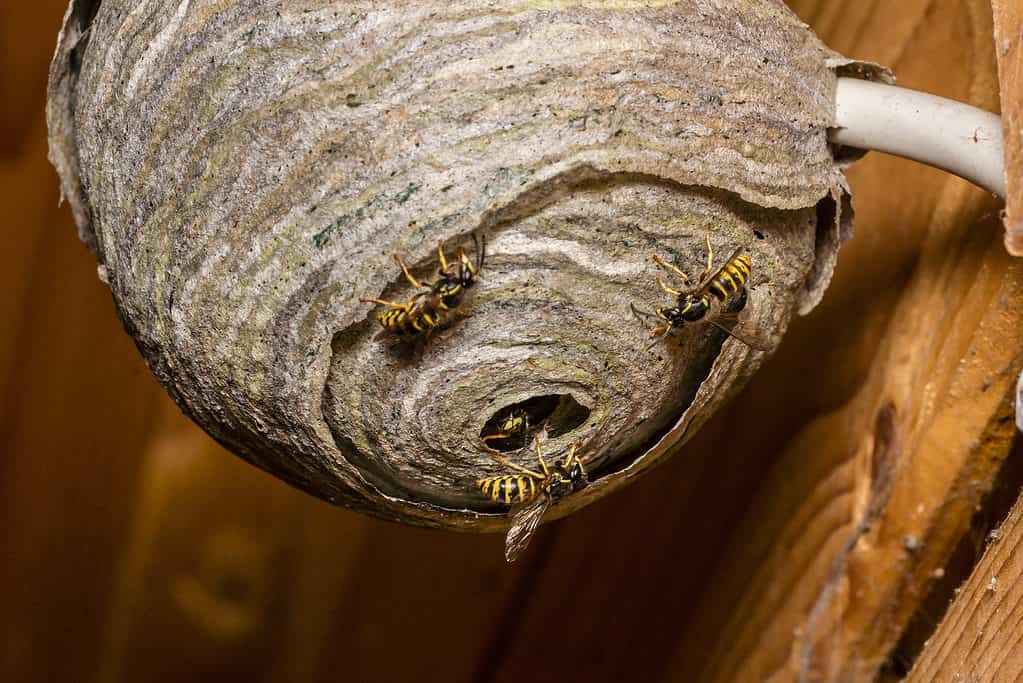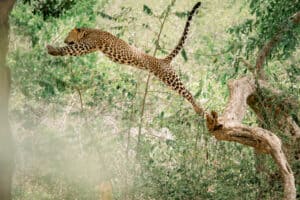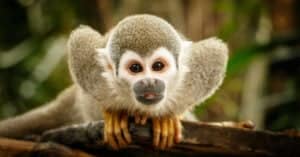Primate species like monkeys are mainly found in tropical jungles. Even though some, like macaques and baboons, are terrestrial, the majority are arboreal. Old World monkeys, such as baboons, geladas, and colobus, are located in Asia and Africa, whereas New World monkeys, such as spider monkeys, tamarins, and capuchins, are located in Mexico and South and Central America.
Take A Look At The Footage Below!
Have a look at this wild experience a curious monkey had in South America when it simply was looking for a bite to eat. To set the scene, monkeys can grasp trees and cling to their food by using their skilled hands and fingers.
In addition, they gather bugs and other invertebrates with their hands. Monkeys use their powerful arms and razor-sharp teeth to trap and kill prey when they’re trying to pursue larger animals.

Monkeys fight for a variety of reasons, including food, territory, and mating rights.
©Gabi Siebenhuehner/Shutterstock.com
Although monkeys are known for their love of bananas, their diet differs greatly between species based on their environment and the food sources available. The monkey in today’s video is craving the sweet taste of insect larvae.
The footage starts off with a bang as a little monkey punches a wasp nest. Instantly, the wasps start swarming the primate and noticeably sting him. Hanging by his tail and one hand, the monkey continues to swat away at the wasps.
It’s not uncommon for animals to break into a hive in hopes of scoring fresh larvae or honey. Because the majority of wasp species don’t make honey, it’s safe to assume the animal was going after the eggs.
Breaking A Wasps Nest

©iStock.com/SKatzenberger
In an effort to get to the nutrient-rich wasp larvae that live in the nest, some monkeys have been observed to destroy and smash wasp nests. They can then choose the larvae from the hexagonal cells in the hive and consume them once they have rid the nest of the mature wasps.
Although it may appear dangerous, untamed and mischievous monkeys have thick hair that shields them from wasp stings. They can also evade the wasp’s thanks to their quick reflexes in the treetops.
These larvae provide the primates with a nutritious snack that has a high protein and healthy fat content, outweighing the hazards. It’s extremely likely that this is what is occurring even though we didn’t observe this in person. Thankfully, the video we’ve included below makes it feel like you’re there!
Monkeys aren’t the only animal to attack wasps’ nests in hopes of finding food. In fact, black bears are known to dig nests up out of the dirt and smash them to pieces. Like primates, the stings don’t affect bears too much.
Any animal dealing with stinging creatures always needs to protect their eyes, nose, and mouth. Luckily, the monkey in this video wasn’t injured and bravely showed the insects who’s the boss.
The photo featured at the top of this post is © iStock.com/SKatzenberger
Thank you for reading! Have some feedback for us? Contact the AZ Animals editorial team.






